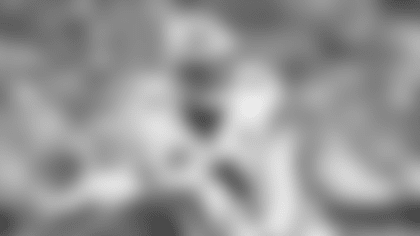[![Click here to view this image at full size in another window... internal-link-placeholder-0]](/assets/images/imported/mediacontent//ver1-0/content/images/store/11/2/6bd536c2-630f-485e-92ce-b159882e49b8-large.jpg)
Above, you can see that 42% figure is actually a decline from the previous season in which Garrett posted his highest rate of 3+ wide receiver formations, 46% of total plays. A big reason for that was the acquisition of Dez Bryant. Bryant didn't immediately start as a rookie, but Garrett clearly wanted to get him on the field. The Cowboys found success in 2010 with Bryant and Roy Williams both spending time as the third receiver, and Patrick Crayton handled the position well in 2009 after losing his starting gig to Austin. All told, the Cowboys have posted the league's eighth-highest yards per attempt from three-receiver sets over the last three seasons.
Despite success with three-receiver formations, Garrett and the 'Boys haven't lined up in them very often. Since 2009, the NFL has seen a shift to more and more pass-heavy looks. During that time, teams have lined up with three or more receivers on the field on 51% of plays. The Cowboys have checked in below the league average every year Garrett has been in Dallas.
That's not necessarily a bad thing, however. Since 2009, teams that have had a third receiver that ranked in the top 10 in yards among all such players have been slightly less successful (8.9 wins/season) than the bottom-dwellers (9.0 wins/season).
The teams that have lined up with three or more receivers the most often have also struggled. The top 10 teams in 3+ wide receiver sets since 2009 have averaged only 6.6 wins/season, compared to 8.5 wins/season for the 10 teams that have lined up in 3+ receiver sets the least.
Poor teams tend to pass the ball often because they need to overcome deficits, but that isn't the reason for the results. By analyzing third-receiver production as a component of overall team passing success, teams that throw the ball only because they are losing won't skew the results. After doing so, the results only get more drastic. Third receivers that have tallied over 14% of their team's total receiving yards have seen their squads manage a measly 5.9 wins/season. Those teams that have had a less productive third receiver, one that raked in less than 10% of their team's total receiving yards, have averaged a more impressive 9.2 wins.
That's not to say third receivers are unimportant or lining up in three-receiver sets is a mistake. Rather, what's more vital is the efficiency a team generates from the formations. Since 2009, the top 10 teams in yards per play from three-receiver sets have averaged 10.2 wins/season. The bottom 10 squads have mustered only 5.9 wins/season.
My hunch is that a great third receiver's presence is not necessarily represented in their own statistics, but rather by the extent to which they can improve overall offensive efficiency. Third receivers often play the slot, and success underneath can open up big plays downfield. Robinson posted outstanding numbers in 2011, but he also benefited from Bryant and Austin outside, as well as Jason Witten in the middle and a quality running game. For teams with fewer weapons in their offensive arsenal, third receivers' stats are probably less representative of their true value since defenses can clamp down on them when needed.
So what does this all mean for Dallas? Two things. First, it shows Garrett has done a nice job of sticking to his offensive philosophy. The Cowboys have experienced a huge portion of their offensive success from two-tight end sets under Garrett, particularly in the passing game. You might see fewer two-tight end sets this season with the loss of Martellus Bennett, but that's not a certainty.
Secondly, it means the 'Boys could be well served holding an open competition among the receivers already on the roster: Kevin Ogletree, rookie Danny Coale, Dwayne Harris, Andre Holmes and Raymond Radway. The team likes the potential at the position. Ogletree is probably the favorite among those players, with Coale's slot receiver-suited skill set likely making him the current runner-up.
Of course, the Cowboys could sign a free agent if the price is right. Even though the stats indicate a third receiver isn't necessarily an essential component of offensive success, someone who has additional value as a returner might interest Dallas. The free agent pool is shallow, however. Jacoby Jones was an option but he just landed in Baltimore, and the top potential target for the 'Boys at this point could very well be, dare we say, one Patrick Crayton.
Ultimately, the Cowboys don't need to focus on finding the next Laurent Robinson. Robinson's receiving totals were a tremendous asset last season, but the Cowboys' No. 3 receiver in 2012 could potentially improve offensive efficiency in a different manner ... and he might already have a star on his helmet.





